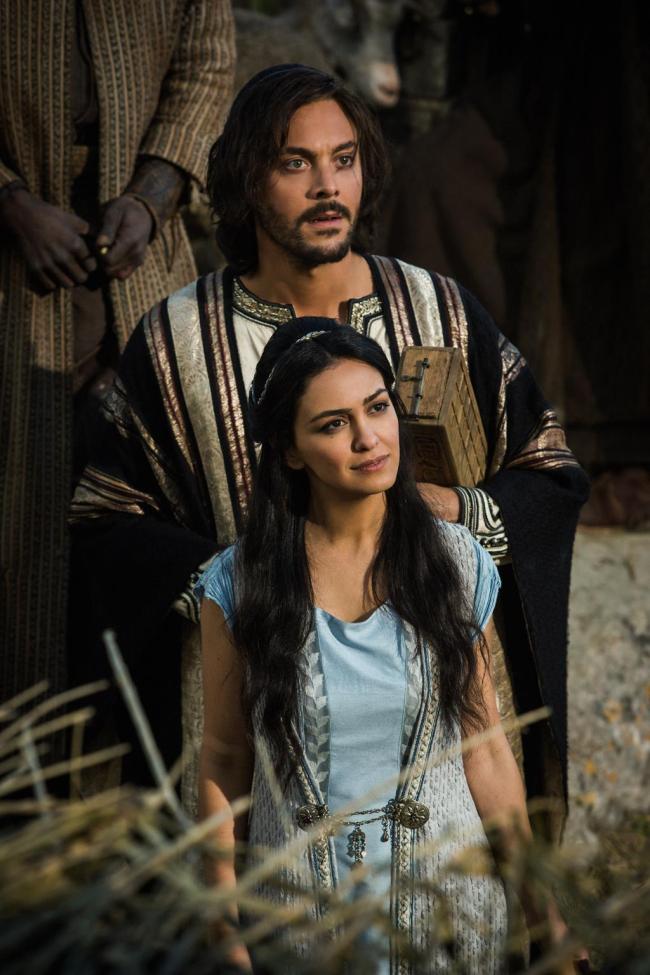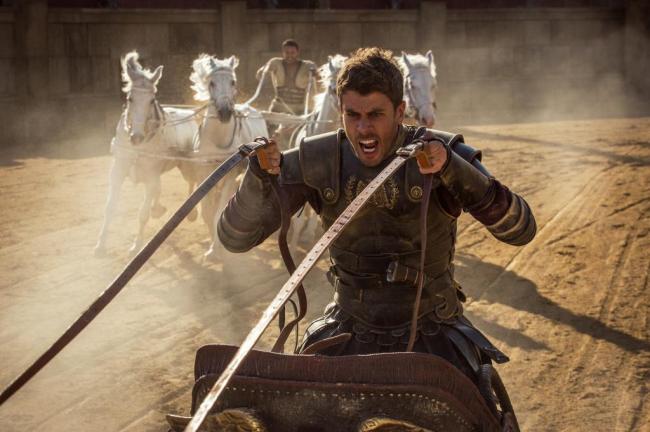Neither a sterling remake nor the disastrous camp hoot some were anticipating, those punks, the new “Ben-Hur” arrives in theaters beaded with flop sweat. Its box office forecast calls for gray skies followed by red ink: It cost about $100 million to make and the tracking data puts the weekend haul at $14 million to $15 million, which is grim like the Charlton Heston jawline under pressure was grim.
The movie arrives in the supplicant position, begging for unfavorable comparisons to the 1959 William Wyler film version with Heston, Stephen Boyd and a legendary chariot race of the pre-digital variety. That film may have been longer than it was great, but it is an Oscar-plated emblem of a different entertainment age.
The remake, naturally, is jostled every second by computer-generated imagery. An untold number of digital horses and digital men are slaughtered in the line of 21st century moviemaking duty, particularly in the two massive action sequences: the sea battle, where galley slave Judah Ben-Hur secures his freedom, and the chariot race, where he secures a gold medal in what might be described as the snuff Olympics.
The movie arrives in the supplicant position, begging for unfavorable comparisons to the 1959 William Wyler film version with Heston, Stephen Boyd and a legendary chariot race of the pre-digital variety. That film may have been longer than it was great, but it is an Oscar-plated emblem of a different entertainment age.
The remake, naturally, is jostled every second by computer-generated imagery. An untold number of digital horses and digital men are slaughtered in the line of 21st century moviemaking duty, particularly in the two massive action sequences: the sea battle, where galley slave Judah Ben-Hur secures his freedom, and the chariot race, where he secures a gold medal in what might be described as the snuff Olympics.

But in the spirit of forgiveness, if you don’t mind everything wrong with this sixth screen adaptation of the 1880 Lew Wallace novel -- and there’s a lot -- it’s a reasonably engaging spectacle on its own terms. I happen not to like those terms, because director Timur Bekmambetov’s visual attack and brand of action make me urp. But he’s a sincere merry hack.
Several adjustments have been made from the ’59 edition. Jesus Christ, played by Rodrigo Santoro, moves up from a star cameo to a key supporting player in Bekmambetov’s version. In the Wallace novel, the life of (fictional) Judah Ben-Hur, Jewish nobleman growing up in Roman-occupied Jerusalem with his adoptive brother Messala, intersects with that of the life and death of Christ. Here, the Son of God is introduced uttering progressive teachings while working on a new door (carpentry, you know) in an outdoor market. Unlike the three-hour ’59 film, the new, two-hour blur of a “Ben-Hur” weaves Santoro’s revolutionary figure throughout. The story, more openly evangelical-friendly in this telling, lands on an openly conciliatory note between Judah and the Roman officer Messala, old friends, then enemies, then rivals and combatants in the climactic chariot race.

Compare the two racing sequences, the ’59 and the 2016. The former is stately and gripping, clear as a bell in terms of what’s happening to whom, and when. The latter, shot in frenzied shaky-cam close-ups, is the opposite of stately, and is pure hell visually on the turns in particular; you literally can’t get a read on things. This is largely deliberate. The physical mayhem in director Bekmambetov’s hands is meant to be chaotic and messy. (The new script comes from Keith R. Clarke and John Ridley.) Working with cinematographer Oliver Wood, Bekmambetov keeps the frames over packed and grubby, in the name of realism.
The narration comes from Morgan Freeman, who also plays the Nubian sheik who rescues Judah on the beach and goes into the chariot-racing business with him. The leading actors labor valiantly and to little effect. Jack Huston’s Judah and Toby Kebbell’s Messala barely register in their own epic. Nazanin Boniadi’s Esther is a more interesting story -- too bad she doesn’t get the chance to tell more of it. More than “War Dogs,” even, “Ben-Hur” was, is and always shall be a bromance to the core. (TNS)
By Michael Phillips
Chicago Tribune





![[KH Explains] No more 'Michael' at Kakao Games](http://res.heraldm.com/phpwas/restmb_idxmake.php?idx=644&simg=/content/image/2024/04/28/20240428050183_0.jpg&u=20240428180321)



![[Grace Kao] Hybe vs. Ador: Inspiration, imitation and plagiarism](http://res.heraldm.com/phpwas/restmb_idxmake.php?idx=644&simg=/content/image/2024/04/28/20240428050220_0.jpg&u=)








![[Herald Interview] Xdinary Heroes shoot for the next level with 'Troubleshooting'](http://res.heraldm.com/phpwas/restmb_idxmake.php?idx=642&simg=/content/image/2024/04/29/20240429050745_0.jpg&u=)